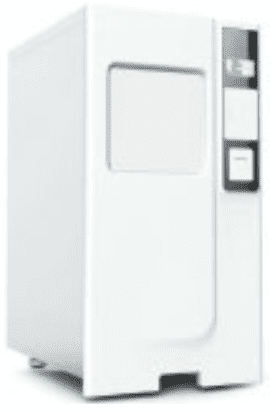INSTECH SYSTEMS Low-temperature plasma sterilizers are ideal for sterilizing medical devices in a cost, time, and energy-efficient way.
INSTECH SYSTEMS offers a low-temperature plasma sterilizer with the latest technology and excellent performance. rapid sterilization cycle, environmentally friendly, easy installation (no site modification), safe usage for staff and patients.
INSTECH products come with a user-friendly touch interface and USB interface.
- Consumables
- Incubator
- Biological Indicator
- Chemical Indicator Strip
- Automatic sealing machine
- Tyvek Pouch SMS Wrapping sheet Tray
- Soft lumen
- H2O2 container
| Model | INSTECH INSTECH |
|---|---|
| External | PVS60 PVS130 |
| Dimensions | 1060 * 860 * 940*650 * |
| (L*W* H) | 1660 1510 |
| Chamber | 320 652 * 432 790 * |
| Dimensions | 420 330 |
| Weight | (L*W*H) 470 KG 270 KG |
| Chamber Capacity | 60 L 130 L |
| Control Interface | 7 LCD (Touch Screen) |
| Temperatures External | 2 5°C 40°C |
| Humidity | N 30% 80% |
| Rated Input | AC 220V/ 50 Hz |
| Rated Power | 3.6 kW 2.5 kW |
| Internal | - 40°C 55°C |
| Temperatures | ~30 60 ~20 60 |
| Cycle Period | mins mins |
INSTECH low temperature plasma sterilizers utilize strong electro magnetic fields to create a hydrogen peroxide plasma cloud. The sterilization process has two stages: diffusion and plasma.
- Diffusion: Unsterilized objects are placed into a vacuum chamber. Hydrogen peroxide vapor is injected and left to diffuse throughout the chamber for a specific time.
Plasma: Specific radio frequencies are introduced into the chamber converting vapor to plasma.
Materials suitable for INSTECH low temperature plasma sterilizer include:
- Acetal Resins
- Aluminium
- EVA (Ethyl – Vinyl -acetate)
- Glass
- Kraton
- Polycarbonate
- Polyethylene
- Polyetherimide
- PMMA
- Polymer
- Polyolefin
- PP (Poly – Propylene)
- Polystyrene
- Polyurethane
- PVC(Poly Vinyl Chloride)
- Stainless Steel
- Tetlon
- Titanium
Frequently Asked Questions (FAQs)
What is plasma sterilization?
Plasma sterilization is a low-temperature sterilization method that uses hydrogen peroxide gas plasma to kill or eliminate microorganisms on medical instruments and other items that cannot withstand the high temperatures of steam sterilization (autoclaving).
How does plasma sterilization work?
In plasma sterilization, items to be sterilized are placed inside a chamber. Hydrogen peroxide gas is introduced into the chamber, and a radiofrequency or microwave energy source creates a plasma state from the gas. The plasma reacts with the microorganisms, effectively sterilizing the items.
Why is plasma sterilization used?
Plasma sterilization is used for items that are sensitive to heat and moisture, such as certain medical devices, electronics, and plastics. It provides an effective method of sterilization without the use of high temperatures.
Is plasma sterilization as effective as steam sterilization?
Plasma sterilization is generally considered effective at killing microorganisms, including bacteria, viruses, and spores. However, its efficacy may depend on factors like cycle parameters, equipment maintenance, and proper loading techniques. Steam sterilization remains the gold standard for many applications due to its wide acceptance and effectiveness.
Are there precautions to consider when using a plasma sterilizer?
Yes, precautions are necessary when operating a plasma sterilizer. Ensure that operators are trained on its proper use, wear appropriate personal protective equipment (PPE), and follow safety protocols to prevent exposure to hydrogen peroxide gas.

